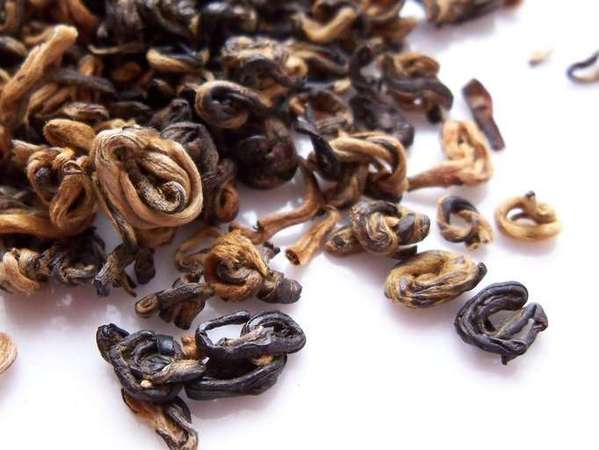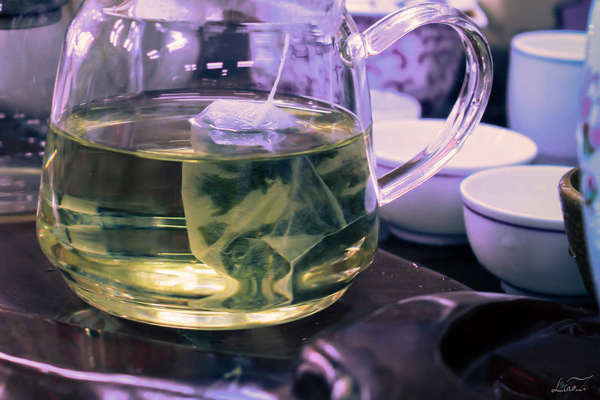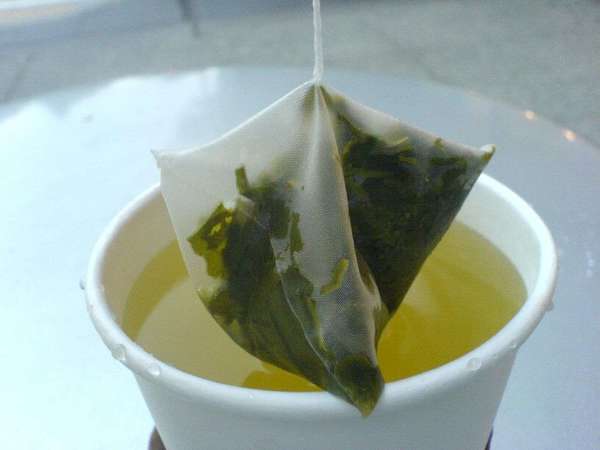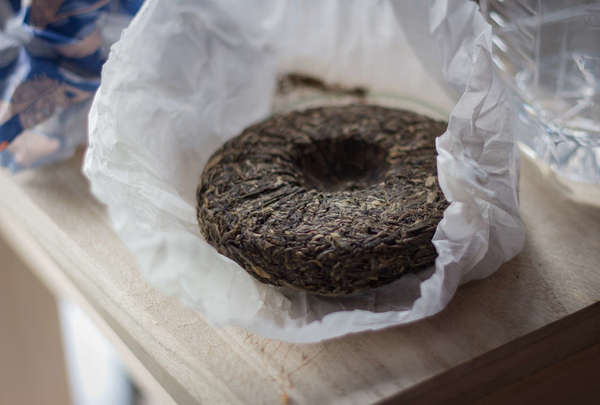Loose Tea, Tea Bags, Sachets, Etc.
Last Updated: Aug. 2, 2017Here on RateTea we classify individual teas in several different ways, based on how the tea leaf is packaged and distributed. You will find the following system of icons throughout the site:
 Photo of Leaf of Yunnan Noir from Adagio Teas, Photo © A Girl With Tea, CC BY 2.0.
Photo of Leaf of Yunnan Noir from Adagio Teas, Photo © A Girl With Tea, CC BY 2.0.Loose tea / loose leaf tea
Main article: Loose TeaLoose tea, also called loose leaf tea, is dry tea leaf that is sold in bulk, packaged in a single bag or tin, with no additional packaging. Loose tea is the best choice for quality, price, and sustainability, because when buying loose tea, you pay for the leaf, not for the packaging.
Many of the best teas are only available in loose leaf form.
Loose-leaf tea also has the advantage of allowing you to fine-tune the exact amount of leaf you want to use in preparing your tea. The only downside of loose-leaf tea is that it can be less convenient to brew, often requring an infuser or strainer.
Tea bags
 A tea bag steeping in a glass mug. Photo by Liao Zi, © Liao Zi, CC BY-SA 2.0.
A tea bag steeping in a glass mug. Photo by Liao Zi, © Liao Zi, CC BY-SA 2.0.Tea bags often, but not always, contain fannings or dust, which are small particles of tea leaf (more about these and other grades of tea). Fannings and dust are usually considered low-quality tea, although they are often preferred for convenience as they infuse more quickly (see brewing tea). Although tea bags are often assumed to contain low quality tea, it is hard to generalize, as there are always many exceptions to patterns of quality.
Pyramid sachets
 A pyramid sachet filled with green tea. Photo © irrational_cat, CC BY-SA 2.0.
A pyramid sachet filled with green tea. Photo © irrational_cat, CC BY-SA 2.0.Sachets tend to contain higher-quality tea than tea bags, both because whole leaf tea and higher grades of tea tend to benefit more from the increased room to expand, and also because the manufacture of tea sachets is more costly, and it is usually not economically feasible to fill them with low-grade tea. It is common, unfortunately, for companies to market high-quality tea sachets as containing "whole leaf tea" or "full leaf tea" when in reality they just contain higher-grade broken leaf tea, with larger pieces of leaf, so be careful to check exactly what you're getting if the leaf size is important to you.
How we classify tea bags vs. sachets
The classification of tea bags as sachets is subjective: there is no agreed-upon definition of a sachet in the tea industry. Some companies use the term "sachet" to refer to standard tea bags, hoping to fetch a higher price for their product, capitalizing on the association most tea drinkers have between the word sachet and higher-quality teas. Other companies use high-quality sachets and humbly call them "pyramid bags" or just "tea bags".Because of these inconsistencies, RateTea critically evaluates the construction and content of a company's teabag when deciding how to list a tea. We generally classify teas as sachets when their construction allows full expansion of the tea leaf, and when they use the same leaf that a company sells as loose leaf tea. The construction need not have a pyramid shape. We list as teabags teas that have fannings, dust, or small pieces of broken leaf, and we tend to list as teabags those teas packaged in flat bags that do not allow for full expansion of the leaf.
Compressed tea
 Pu-erh and other dark teas are frequently compressed. Photo © Ignat Gorazd, CC BY-SA 2.0.
Pu-erh and other dark teas are frequently compressed. Photo © Ignat Gorazd, CC BY-SA 2.0.Some compressed teas come in a single-serving size, such as a mini tuocha. These compressed teas are suitable for brewing a single cup or pot of tea.
The most common form of compressed tea is a cake or disc, called bing cha(饼茶), meaning cake tea. Other common forms include tuo cha(沱茶), a bowl-shape, and zhuan cha(砖茶), a tea brick.
Blooming tea
Blooming tea is loose tea that has been tied together to form a flower-like shape. When the bloom is placed in hot water, it unfurls, taking on the shape of a flower. Often, blooming teas are artful blends of tea leaves with showy or colorful ingredients such as flower petals, creating a striking visual display when the tea is brewed.Blooming tea is commonly produced in China.


